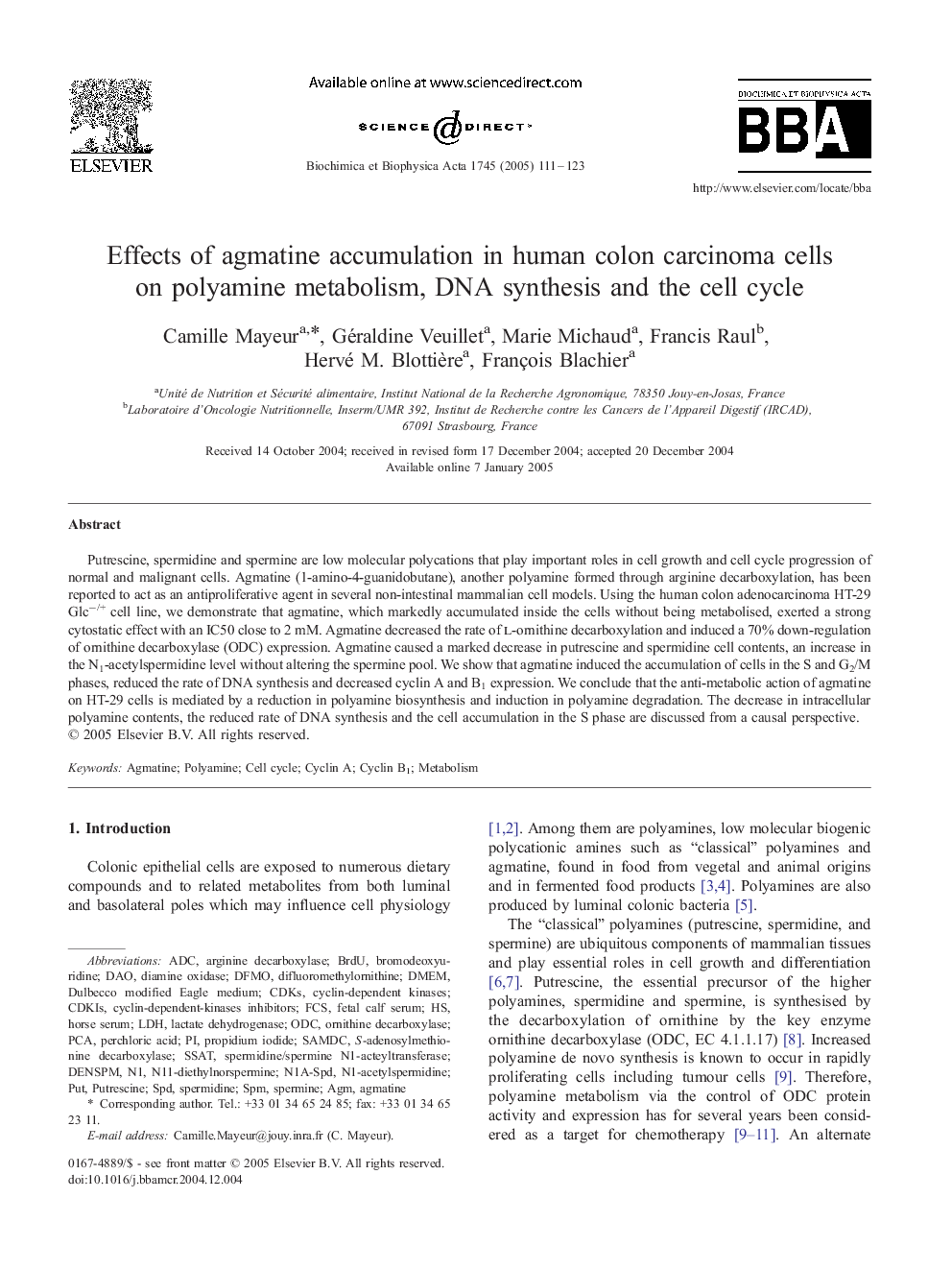| Article ID | Journal | Published Year | Pages | File Type |
|---|---|---|---|---|
| 10803138 | Biochimica et Biophysica Acta (BBA) - Molecular Cell Research | 2005 | 13 Pages |
Abstract
Putrescine, spermidine and spermine are low molecular polycations that play important roles in cell growth and cell cycle progression of normal and malignant cells. Agmatine (1-amino-4-guanidobutane), another polyamine formed through arginine decarboxylation, has been reported to act as an antiproliferative agent in several non-intestinal mammalian cell models. Using the human colon adenocarcinoma HT-29 Glcâ/+ cell line, we demonstrate that agmatine, which markedly accumulated inside the cells without being metabolised, exerted a strong cytostatic effect with an IC50 close to 2 mM. Agmatine decreased the rate of l-ornithine decarboxylation and induced a 70% down-regulation of ornithine decarboxylase (ODC) expression. Agmatine caused a marked decrease in putrescine and spermidine cell contents, an increase in the N1-acetylspermidine level without altering the spermine pool. We show that agmatine induced the accumulation of cells in the S and G2/M phases, reduced the rate of DNA synthesis and decreased cyclin A and B1 expression. We conclude that the anti-metabolic action of agmatine on HT-29 cells is mediated by a reduction in polyamine biosynthesis and induction in polyamine degradation. The decrease in intracellular polyamine contents, the reduced rate of DNA synthesis and the cell accumulation in the S phase are discussed from a causal perspective.
Keywords
DMEMCDKIsSAMDCDifluoromethylornithineODCDFMOOrnithine decarboxylaseDulbecco Modified Eagle MediumFCSADCCDKsPCAS-adenosylmethionine decarboxylasesSATarginine decarboxylasePerchloric acidBrdUbromodeoxyuridineDAODiamine oxidasehorse serumfetal calf serumlactate dehydrogenaseLDHPropidium iodidecyclin-dependent kinases
Related Topics
Life Sciences
Biochemistry, Genetics and Molecular Biology
Biochemistry
Authors
Camille Mayeur, Géraldine Veuillet, Marie Michaud, Francis Raul, Hervé M. Blottière, François Blachier,
